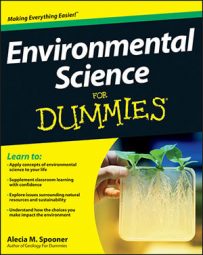Alternative or renewable energy sources aren’t based on resources that are in limited supply on Earth; instead, they’re captured from processes (such as wind, waves, and sunshine) that are continually being driven by energy from the sun or created using materials (such as water) that are naturally renewed through Earth’s processes.
Most of the energy fueling today’s industrial societies and the developing world comes from burning fossil fuels, such as coal, oil, and natural gas. Fossil fuel and nuclear energy sources rely on finding and then destroying geologic resources, such as coal, plutonium, and uranium.
These resources are in limited supply on the planet, and over the last century, coal, oil, and natural gas in particular have become more difficult to access. At some point, the cost of extracting and processing fossil fuels will be more than the returns in energy they provide.
And while nuclear energy is a powerful alternative, it also relies on stores of the geologic resource uranium, which is in abundant but still limited supplies.
The table lists some alternative energy resources and their associated pros and cons, as well as any pollutants they create.
| Energy Source | Pro | Con | Emissions/Pollutants |
|---|---|---|---|
| Biofuel | Easily grown anywhere | Competes with food crops | Particulates (small particles of solid or liquid material suspended in the air) |
| Water | Endlessly renewable, clean | Some habitat destruction | None |
| Geothermal | Low cost after installation | Geographically limited | None |
| Wind | Low cost to install | Geographically limited | Potential danger to flying organisms (birds, bats, and butterflies) |
| Solar | Endlessly renewable | High initial costs | None |
| Fuel cells | Very efficient, no pollution | Difficult storage and transport | None (if fossil fuels aren’t needed to process and transport them) |

